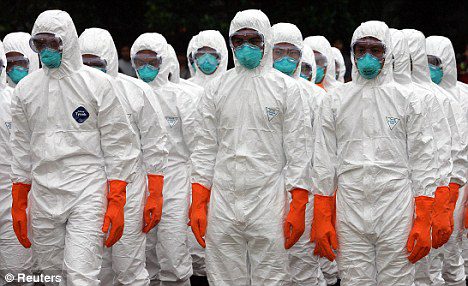On July 1, 2011 the Advisory Committee to the Director, CDC published the “Ethical Considerations for Decision Making Regarding Allocation of Mechanical Ventilators during a Severe Influenza Pandemic or Other Public Health Emergency” an earlier document dealt with vaccines and other priorities. Let’s hope that Ebola does not come to this level of decision making, or H1N1, MERS, SARS, Anthrax, Marburg and HEV68 for that matter.
We have raised these issues several times in the past, as with this post in 2009 concerning the ineffective CDC response to the major H1N1 outbreak that year, and the confusion around allocation of scarce respirators.
Originally published in 2009 – Kicking Grandma off the Ventilator
Availability of and access to mechanical ventilators in advanced stages of H1N1 Swine Flu is a Life/Death issue. The DHHS has initiated an action to identify the number and location of mechanical ventilators within the country (this information will not be available to the public). Earlier studies indicated that 70-80% of existing mechanical ventilators are already being used by patients. Some models estimate that in a severe pandemic the nation would need 750,000 ventilators; however we are not sure of an exact count until the information is released (if released). How these will be allocated is a fundamental issue that remains to be clarified; the New York Legislative body made a noble attempt (see report) to address this, however it is not clear whether grandma’s ventilator would be re-allocated to a sixteen year incarcerated juvenile – who falls into the new priority treatment cohort.

MERS Virus
Federal H1N1 Swine Flu treatment priority policies abound. According to all accounts they are driven by groups of selected, well intentioned, experts within multiple governmental and academic domains. Many times these groups have limited experience, “up-close and personal†exposure, to these situations and fail to consider important intended and unintended consequences of their guidance. This tendency to promote “one size fits all†guidance through “stove pipe†communications creates confusion and chaos at the “hands- on†levels of response.
Guidance generated at state and local levels also lack consistency and clarity. Many state legislative bodies have not removed material barriers (moral, ethical and legal) which hamstring realistic, effective planning and response for pandemic mass treatment events. Responding to these calamities is difficult at best and more often than not responders are faced with limited supplies of life-saving medicines and equipment. Our next two posts will deal with the bewildering range of decisions which community and healthcare organizations face in life-death decisions associated with meeting the needs of all victims in a severe H1N1 Swine flu pandemic.  We will focus on two governmental levels (Federal and State) of populations often overlooked by community and hospital organizations: Federal and State Inmate Populations.







0 Comments